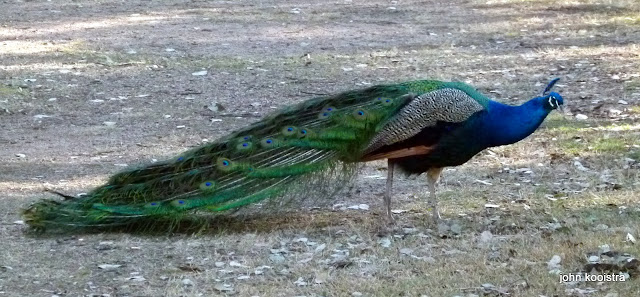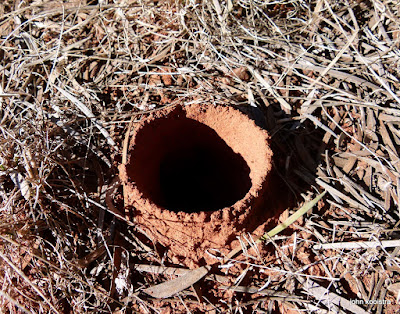Still travelling east our next destination was Barrraba in central north NSW. Near Cobbadah we camped beside Rocky Creek, part of an ancient glacial area that is promoted as a geological wonder by the local authorities.
 |
| Rocky Creek |
My main interest though was finding birds and after arriving in Barraba it didn't take long to find some nice ones including this bittern. It had flushed from along a creek line, as I walked along one of the bird routes the area is known for. Only my second view of this elusive species and a quite uncommon member of the heron family.
 |
| Black Bittern |
The area is also well known for the endangered Regent Honeyeater, which breeds here in the right season. There was very little flowering and the birds had probably moved on to warmer and more productive climes. We did catch up with these unique birds later in the year as I reported in a previous post here: http://qldbirder.blogspot.com.au/2012/11/capertee-revisited.html
It got a bit chilly while free camping at Barraba, with the overnight temperature dropping to -4 degrees celsius. Sitting around a small campfire while sipping port and toasting marshmallows was one way to keep warm!
While driving the dirt road into Cranky Rock Nature Reserve near Warialda, we noticed some movement a way off and pulled up to observe this harrier drifting across the grasslands. A beautiful raptor and one of the easier ones to identify with its distinctive barred tail, white spotted chestnut underside and v-shaped wings when soaring.
 |
| Spotted harrier |
The reserve's name was derived from a 19th century legend where an old "cranky Chinese man" jumped from the top of the balancing rocks to his death, after being chased by police for a crime he'd apparently committed.
 |
| Cranky Rock |
At the nearby camping reserve we were treated to the sight of some pretty parrots that had flown in to feed on some fresh seed courtesy of the caretakers.
 |
| Red-rumped Parrot - male |
 |
| Red-rumped Parrot - female |
A not so wild bird was strutting around the grounds and although he wasn't the showy type, failing to fan his magnificent tail, we could still appreciate the intricate patterns and contrasting colours on display.
 |
| Indian Peafowl - male |
Cheers & Happy Birding

















































